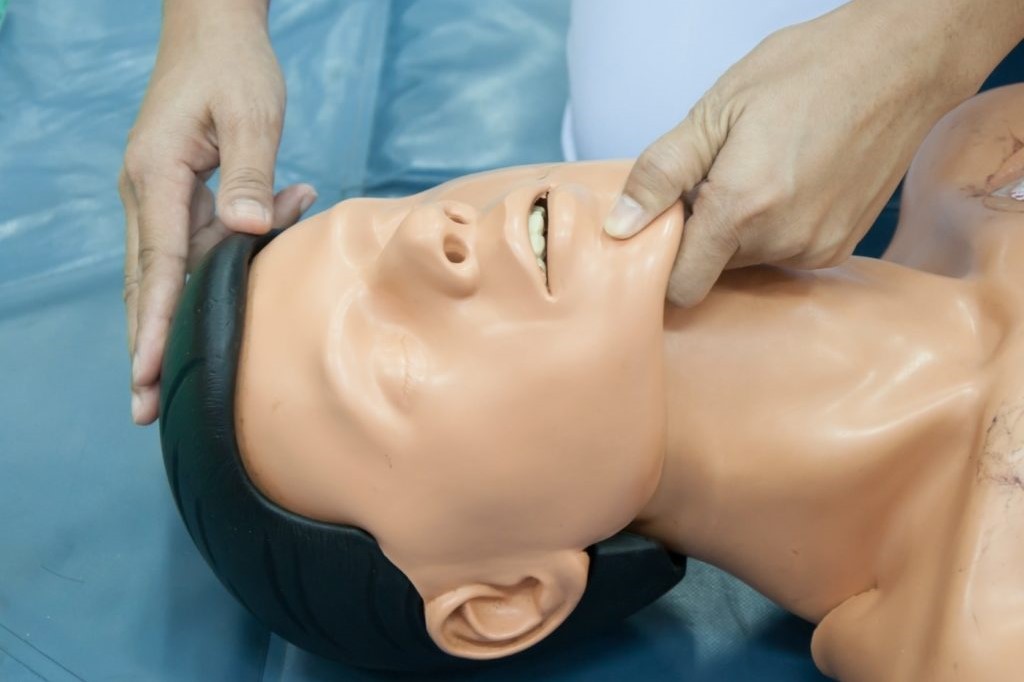
How to Carry Out Primary Survey Using the DRABC in First Aid
DRABC in First Aid: knowing how to react in an emergency and how to give first aid is an important skill that everyone should feel confident in doing
Emergencies happen unexpectedly, and you may need to put these skills into use to assist someone in a life-threatening situation.
In this article, we outline step-by-step how you should carry out an initial assessment of someone injured or ill.
The initial assessment is commonly known as the ‘primary survey’, which consists of the five-step acronym DRABC
What is the primary survey?
The primary survey is referred to as the initial stage of any first aid assessment.
It is the quickest way to determine how to treat any life-threatening conditions in order of priority.
It is mostly used in accidents or incidents such as falls, burns, and road traffic injuries.
Bystanders can use the primary survey to assess a casualty. However, if a qualified and trained first aider is present on the scene, they will likely carry out the initial assessment and administer first aid treatment to the victim.
When faced with an emergency, it is important to assess the situation and identify what needs to be addressed immediately.
First responders can use the DRABC to assess the situation at hand.
DRABC in First Aid: steps to Take
DRABC is the acronym for the steps in the primary survey procedure.
It stands for Danger, Response, Airway, Breathing, and Circulation.
-
-
-
Danger
-
-
The very first step is to assess the overall danger of the situation and whether it safe for you or other persons to approach the scene.
Assess the location, identify any dangers, and remove hazards possible. It is important to ensure your safety first, as you cannot help others if you become injured while trying to get on the scene.
-
-
-
Responsiveness
-
-
Check for the victim’s response to determine their level of consciousness. Approach them from the front and tap their shoulders firmly and ask, “Are you okay?”
The level of responsiveness can be assessed through the acronym (AVPU) – Alertness, Verbal, Pain, and Unresponsive.
-
-
-
Airways
-
-
If the victim is unresponsive, investigate further by checking their airway.
Place the person on their back and tilt their head and chin lightly.
Using your fingertips, lift their mouth in an attempt to open up the airways.
-
-
-
Breathing
-
-
Place your ear above the victim’s mouth and observe for the rise and fall of their chest.
Look for any signs of breathing and see if you can feel their breathing on your cheek.
Check for not more than 10 seconds.
Note: Gasping is not a sign of normal breathing and may indicate the occurrence of cardiac arrest.
-
-
-
Circulation
-
-
Once you have established the victim’s airway and breathing, do an overall check and look for any signs of bleeding.
If there is bleeding involved, you will need to control and stop the bleeding to avoid shock.
Learning basic first aid techniques can help you cope and survive an emergency.
Prompt and effective first aid may keep the victim breathing, reduce their pain, or minimise the consequences of injury until an ambulance arrives.
First aid could mean the difference between life and death for them.
Read Also:
Emergency Live Even More…Live: Download The New Free App Of Your Newspaper For IOS And Android
Stress Fractures: Risk Factors And Symptoms
RICE Treatment For Soft Tissue Injuries


